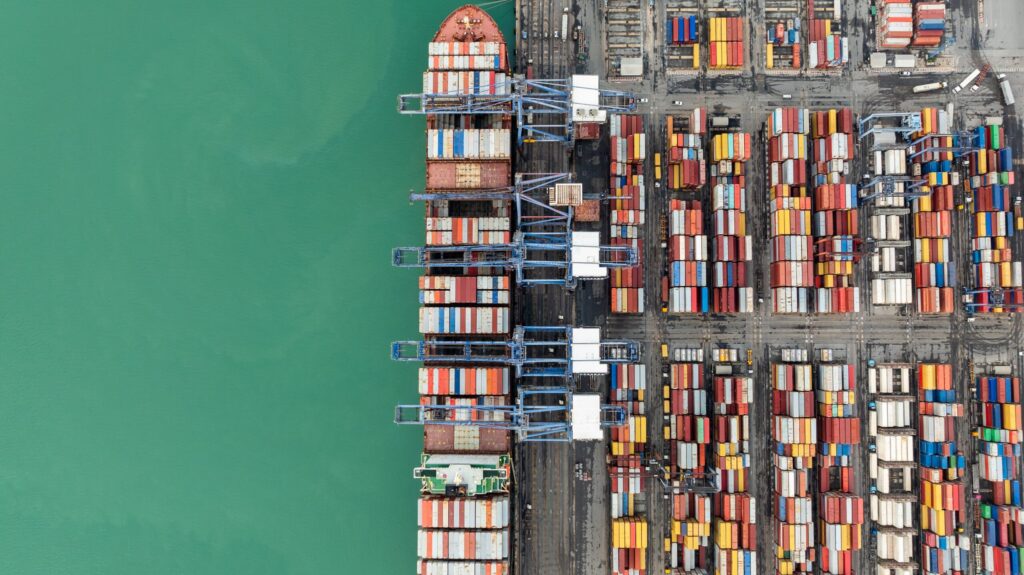A guide to supplier codes of conduct
GoodBlog | read time: 8 min
Published: 19 September 2024

While a network of business partners and suppliers often drives efficiency, growth, and profit, outsourcing materials and components at cost-effective prices can introduce significant risks. Supply chains, particularly those involving thousands of global suppliers, can be fraught with ethical challenges—from environmental degradation to human rights violations.
Before the globalisation of business in the latter half of the 20th century, large multinational companies maintained significant control over relatively straightforward, vertical supply chains. However, as labour and production demands shifted, many of these global companies began outsourcing less profitable production and manufacturing tasks to suppliers in low-cost regions. While this shift improved profitability and increased business agility, it also resulted in a significant loss of control and oversight over the supply chain. Additionally, many of these outsourced operations were located in countries with weaker legal frameworks, making it more challenging to manage social and environmental risks.
Key risks in supply chains and the ramifications for businesses
As this complex network of suppliers evolved, so too did the risks and the different impacts on businesses. What we used to call supply chain risks mainly referred to the risk of disruption in the supply of materials or sourced products, or, in the worst-case scenario, risks of financial instability, prosecution or reputational damage. However, under new international frameworks like the UNGPs, the way that we see and measure risk within supply chains has developed beyond impacts on businesses to encompass risks towards people and the planet. These can include unsafe working conditions, human rights violations like child labour and forced labour, and environmental mismanagement, including pollution and unsustainable resource use.
It is important to recognise that risks to company stakeholders such as these inevitably become risks for the business too, as sustainability has become a key aspect of a company’s long-term profitability. The consequences of these risks are extensive and multifaceted. Legal non-compliance in labour or environmental practices can trigger severe financial penalties and operational disruptions. Moreover, reputational damage from associations with unethical practices can result in the erosion of consumer and investor trust, leading to declines in sales, stock prices, and competitive standing. Disruptions caused by unethical or unreliable suppliers further exacerbate these challenges often leading to delays, increased operational costs, and diminished customer satisfaction. For many companies therefore, addressing these risks has become an important risk-management exercise undertaken to strengthen resilience and uphold their ethical commitments.
The development of legislation to mitigate supply chain risks
However, despite guidance from the UN, the OECD and the EU on conducting greater supply chain due diligence, repeated scandals and examples of abuse continued to emerge. In response, a patchwork of legislation emerged imposing new sets of duties on companies to manage their supply chains more closely.
Most recently the EU Corporate Sustainability Due Diligence Directive (CSDDD) has been passed, requiring large companies operating in the EU to identify and mitigate any adverse human rights and environmental impacts in large parts of their supply chains, as well as their own operations. Certain countries like France, Germany, Norway and Australia, have passed national laws imposing supply chain due diligence.
It has become increasingly clear that no matter how complex or remote the supply chain, companies have both a corporate responsibility, and in many cases, a legal obligation to understand and manage the conduct of their suppliers. While a supplier code of conduct cannot prevent all the risks identified here, it is undeniably an important part of the solution and a key mitigating factor.
What is a supplier code of conduct?
A supplier code of conduct is an official document that clearly outlines a company’s expectations for its suppliers, aligning these expectations with social and environmental principles. The primary purpose of a supplier code of conduct is to promote transparency throughout the supply chain, establishing accountability for unethical practices by detailing the standards that suppliers must meet.
Key topics typically covered in a supplier code of conduct include:
- Labour Standards: Addressing issues such as the prevention of child labour and human trafficking, elimination of forced labour, living wages, worker health and safety, anti-discrimination policies, and the protection against worker exploitation.
- Environmental Standards: Covering areas like waste and material disposal, the management of hazardous substances, emission reduction, and resource efficiency. Supplier codes of conduct can also be an essential tool for helping to build adherence and transparency from suppliers with regards to the communication of their carbon emissions. This, in turn, helps ensure that the buying company is reporting accurately and fully on its scope 3 carbon emissions.
- Ethical Standards: Encompassing anti-corruption measures, fair business practices, and responsible partner relations.
Benefits of having a supplier code of conduct
Supplier codes of conduct are a powerful tool for extending a company’s ethical standards across its supply chain, ensuring that a collaborative approach with suppliers and continuous improvement towards sustainability goals. Businesses enforcing a supplier code of conduct can create a strong deterrent against malpractice whilst simultaneously raising awareness of company values and requirements, helping to attract suppliers that align with the organisations ethos and pushing current suppliers to adopt the responsible practices that it outlines.
Furthermore, within organisations, purchasers often struggle to enforce ethical standards with suppliers and ensure these standards are considered in supplier selection. A robust and well-publicised supplier code of conduct provides significant support, thus empowering purchasers to uphold ethical principles more effectively.
Implementing a supplier code of conduct can enable businesses to comply more effectively with legislation and regulatory standards, fostering greater transparency and accountability throughout their operations. By standardising their expectations across multiple countries, companies can avoid the pitfalls of relying on inconsistent local standards that may fall short and can help raise standards more widely.
Moreover, when a major company in its sector publishes a supplier code of conduct, it can trigger a ripple effect, impacting the entire industry. Some organisations are large and influential enough within their sector that their standards gradually become the new norm, pushing industry-wide practices to higher standards.
Top tips for developing a supplier code of conduct
Creating an effective supplier code of conduct requires a strategic approach and a deep understanding of your supply chain and of your internal purchasing practices. Here are some comprehensive steps to ensure your supplier code of conduct is robust and impactful:
- Conduct risk assessment: Ideally, start by assessing the risks within your supply chain. This initial assessment helps identify potential risk areas and will give you a list of topics that are material for your business and your supply chain, allowing you to build a targeted and effective code of conduct. If conducting a supply chain risk assessment is too lengthy and costly a process for your business a suitable alternative is to engage with external experts on the key segments of your supply chain to determine the main risk areas in your procurement.
- Set realistic and achievable standards: Establish clear, realistic standards and practices that both your organisation and suppliers can meet, aligning them with the best sectoral practices as well as internationally recognised standards. A good place to start is by examining the practices of key competitors and what the industry governing body is recommending. An excellent example of this is in the electronics sector where a majority of the largest electronics companies adhere to the Responsible Business Alliance (RBA), an industry coalition. Additional guidance and existing frameworks are available from other internationally recognised standard setting bodies such as the OECD Guidelines for Multinational Enterprises and the UN Global Compact.
- Engage with your purchasing teams: The purchasing team is often in the best position to provide a comprehensive overview of potential risks encountered with suppliers. They can also provide valuable insights at various stages of supplier code of conduct development, including the recommendation of key suppliers.
- Commit your organisation: An effective supplier code of conduct should not only contain commitments that apply to suppliers but also strong commitments from the company that authors the code. Some of the most serious issues found among suppliers are in part caused by the buying organisation’s purchasing practices. Whether this be a result of unfair purchasing practices, unreasonable deadlines, or a lack of open dialogue between suppliers and purchasers, strong commitments from your organisation can have a truly positive impact on your suppliers’ ability to meet the standards you impose on them.
- Engage and communicate with suppliers: Open lines of communication with your existing suppliers to gain their views on aspects that will impact the code, such as how requirements could be improved and what areas of risk they identify. Clearly communicate your expectations and ensure they understand the importance of adhering to the new standards. This dialogue fosters cooperation and buy-in from your suppliers. It is also extremely beneficial to integrate the feedback of key suppliers in the Code’s drafting process on a voluntary basis.
- Gradual improvement: an imperfect supplier code of conduct that addresses the key issues for your organisation and is implemented in your supply chain is far better than a perfect one that never gets published. Aligning all internal stakeholders and a few key suppliers in a multilateral consultation process can take a lot of time. It is better to move forward and set yourself a strict deadline to release your first supplier code of conduct, even if it means revisiting and improving it the following year, enriched by the experience of its implementation.
- Implementation and monitoring: A supplier code of conduct will only be effective if it is properly implemented and monitored. Determine at which step in the procurement process the supplier code of conduct will be introduced in discussions with your suppliers, and when they will be asked to commit to it. Also, consider including it in your tenders and on your public communication platforms, such as your extra-financial reporting and company website. In time, it is essential to develop a robust implementation plan that could include training for suppliers on the new standards and regular audits to ensure compliance.
- Engage with your own teams: beyond professional buyers, many departments and divisions within your company are likely making purchases, sometimes in large quantities and from important suppliers. As non-professional buyers, they often do not receive the same training and are not part of the same information loops. It is particularly important to make all your teams understand that adherence to your supplier code of conduct must be a key factor in purchasing decisions, for the sustainability of your organisation and the sector.
- Promote transparency and accountability: Encourage transparency and accountability throughout your supply chain. Require regular reporting from key suppliers on their compliance with the code. Transparency builds trust and demonstrates your commitment to ethical practices.
- Review and update regularly: Periodically review and update your supplier code of conduct to reflect changes in laws, industry standards, and company values. Continuous improvement ensures that your code remains relevant and effective in addressing emerging risks and challenges.
By following these steps, businesses can develop a comprehensive and effective supplier code of conduct that not only mitigates risks but also promotes ethical behaviour, legal compliance, and sustainable practices throughout their supply chains.
How GoodCorporation can help
With over 20 years of experience, GoodCorporation has assisted a diverse array of clients in developing and implementing their codes of conduct. Our team of experts provides comprehensive services for organisations seeking to create a supplier code of conduct, guiding them through every stage, from initial development to global distribution, ensuring that the code aligns with your core principles and effectively addresses all relevant risks. To learn more about how GoodCorporation can address your businesses code of conduct requirements, visit our code of conduct services webpage or contact us directly.
work with us
